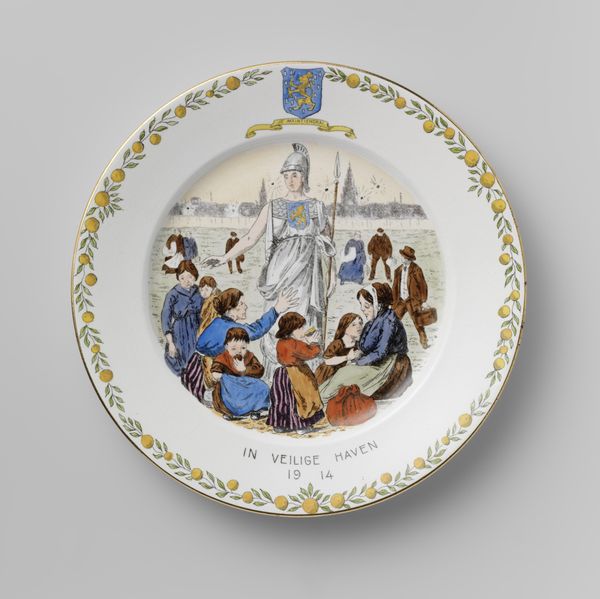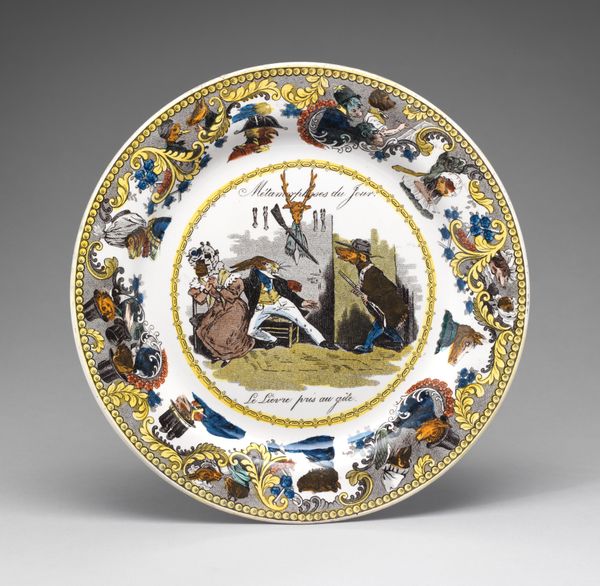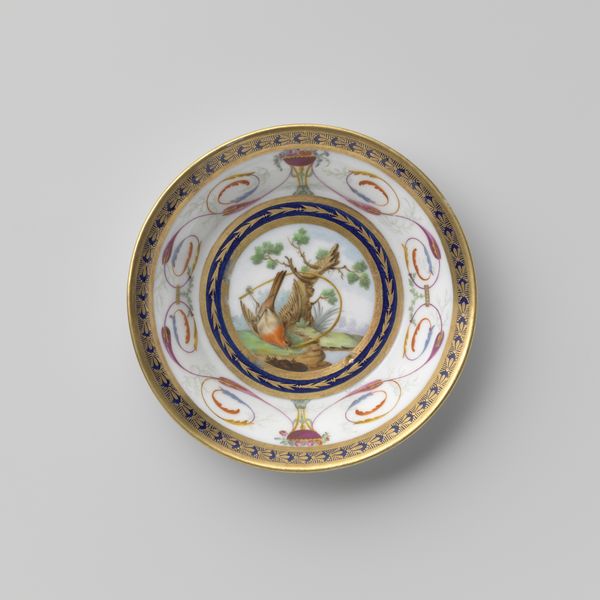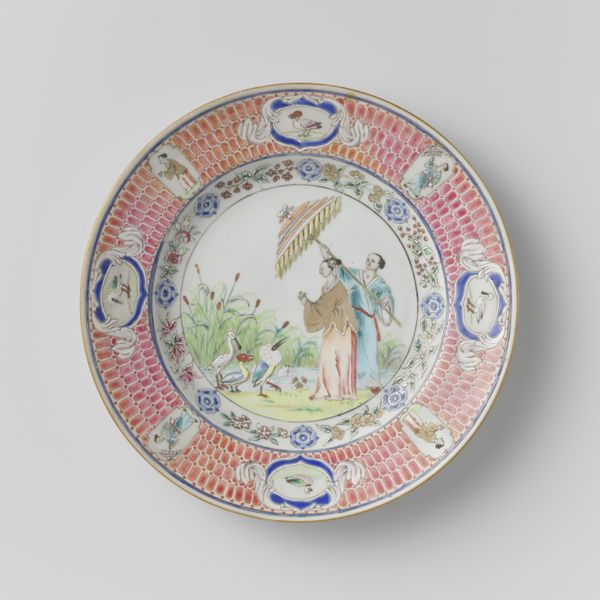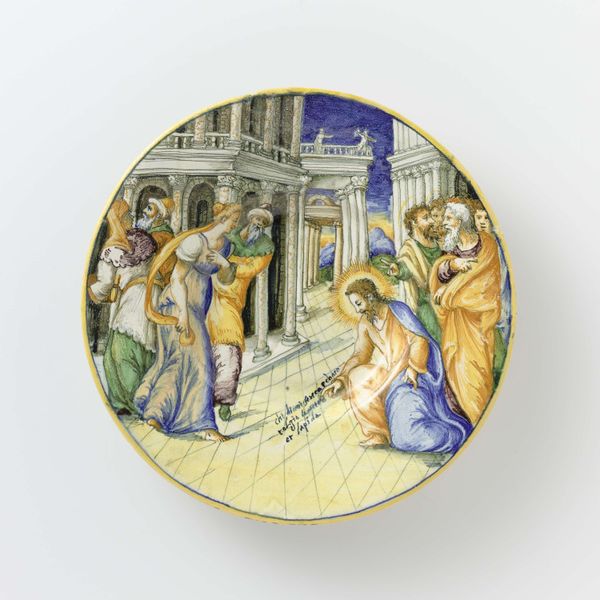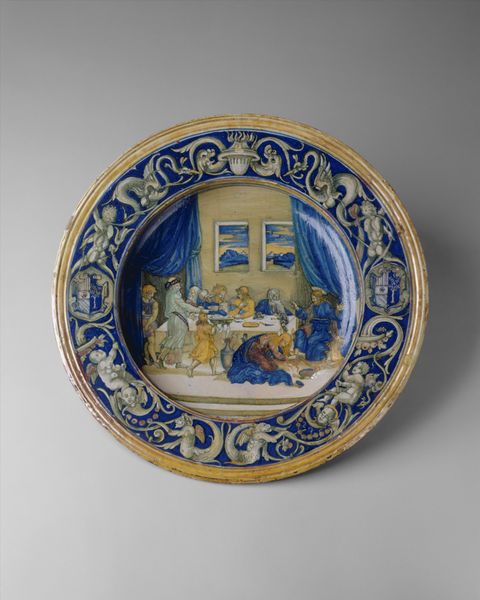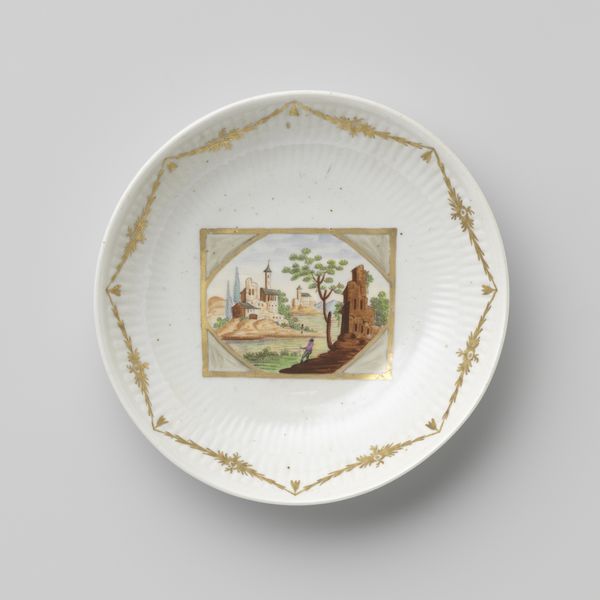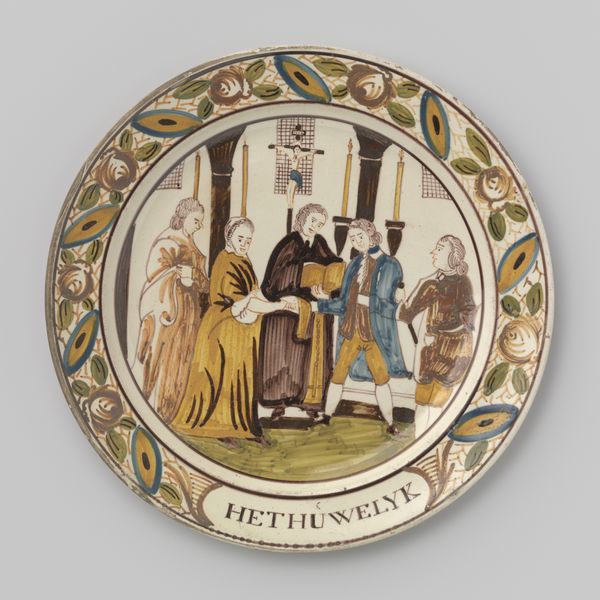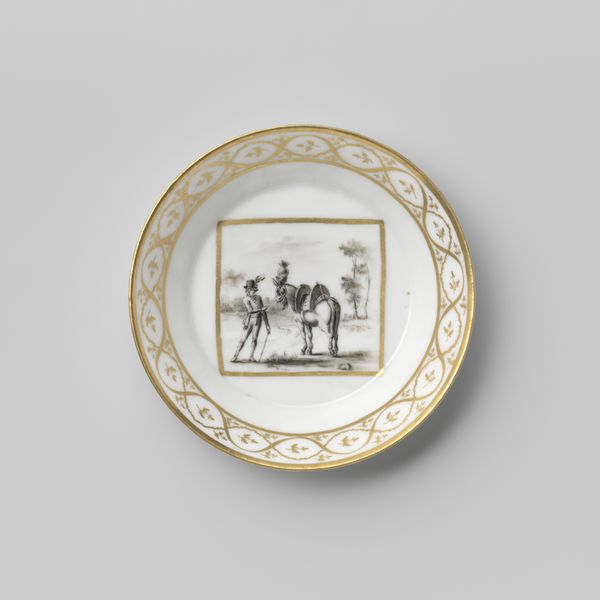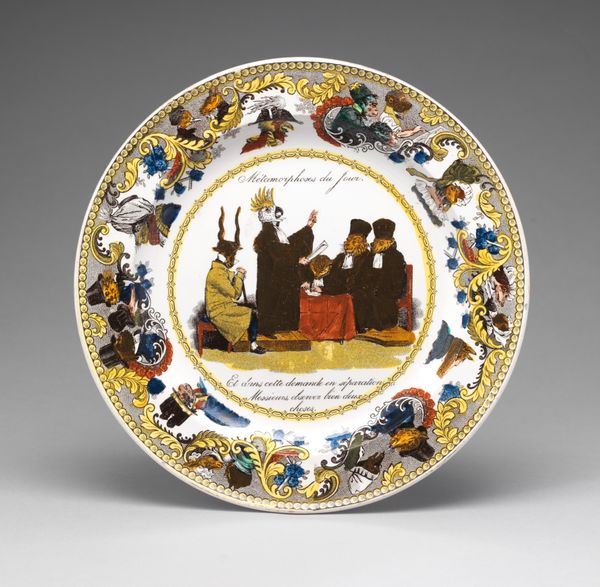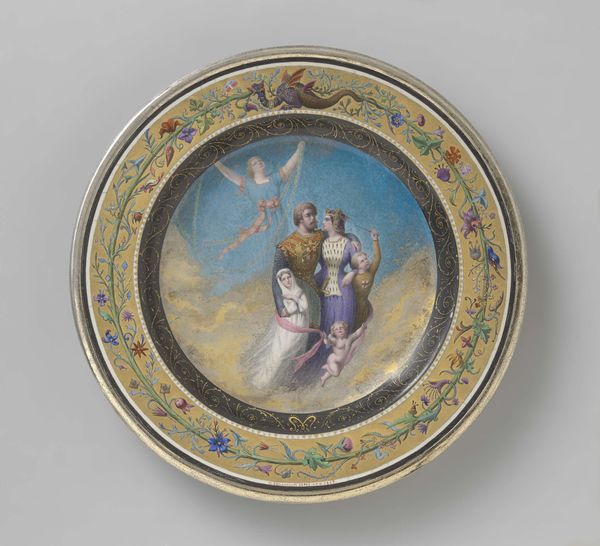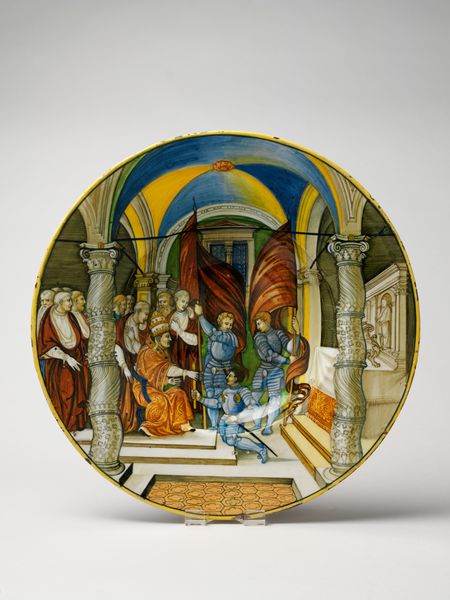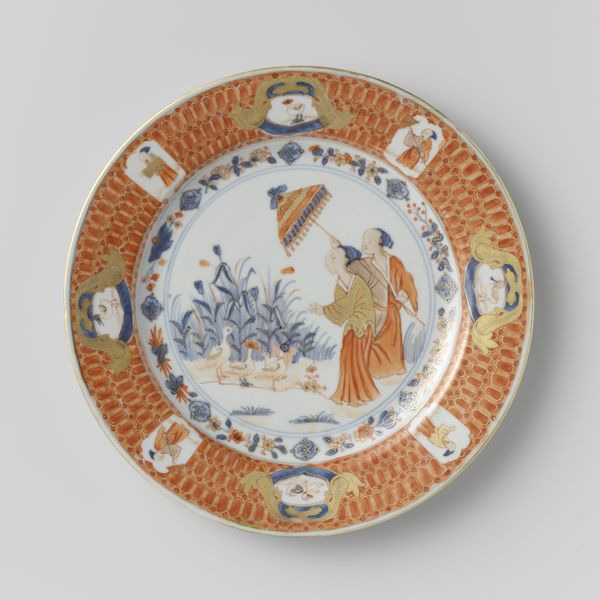
ceramic
#
ceramic
#
figuration
#
genre-painting
#
history-painting
#
decorative-art
Dimensions: height 3 cm, diameter 25.2 cm
Copyright: Rijks Museum: Open Domain
Editor: This decorative ceramic plate, titled "Onder deez' boom is't veilig ...en, anno 1914", crafted by N.V. Société Céramique in 1914, presents a somewhat idyllic scene against the backdrop of a war year. The contrast feels a bit jarring. What story do you think this plate is trying to tell? Curator: This plate is indeed fascinating in its depiction of safety amidst the outbreak of World War I. Considering the socio-political context of 1914, the imagery speaks volumes about constructed narratives. Notice the allegorical female figure offering provisions "under this tree" -- a deliberate attempt to portray the Netherlands as a safe haven, even as war rages elsewhere. Editor: I see, it's interesting to think of a plate serving a political purpose! The figure, she seems like a classic symbol but also like a real person? Curator: Precisely! The choice to employ this classically inspired female figure connects to a long history of using allegorical imagery to communicate national identity and ideals. It’s fascinating how commercial objects like these participated in shaping public perception during wartime. Note, also, how the text curves around the figurative scene and invites the viewer to participate in the narrative. Editor: So, it's not just art for art's sake, it is art made for people and political messaging. Would this have been displayed or used? Curator: The beauty of decorative art is its ambiguity in function. Something like this ceramic plate would have likely been both decorative, displayed on a wall or shelf, and functional. The aim of pieces such as this was to saturate everyday lives with this particular message of safety and stability. Editor: I never would have looked at a plate and thought so much about political messaging and identity! I will never see decorative objects the same way again. Curator: Exactly. Objects carry stories; our work is to excavate them, connect them to larger histories, and recognize the politics of representation in the everyday.
Comments
No comments
Be the first to comment and join the conversation on the ultimate creative platform.
